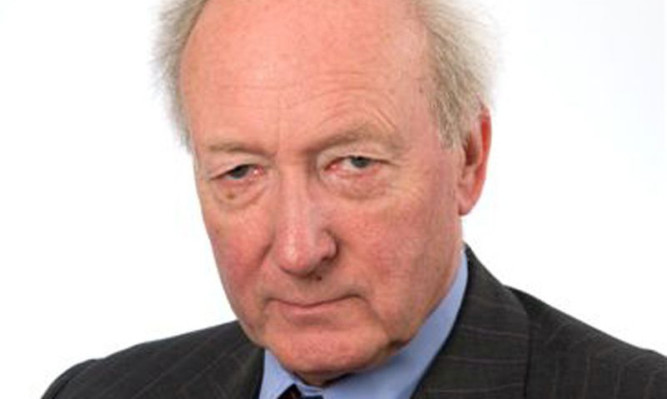The company behind plans to extract gas from coal under the Firth of Forth has been accused of trying to “hold Scotland’s environment to ransom”.
WWF Scotland has urged the Scottish Government to extend its moratorium on unconventional oil and gas developments to cover underground coal gasification (UCG), a technique that produces gas from underground coal seams.
The SNP has also come under pressure from within its own ranks to expand the scope of the ban.
It follows the publication of a series of letters from Algy Cluff, chairman and chief executive of Cluff Natural Resources, to Scottish ministers.
The company wants permission to build the UK’s first deep offshore UCG project near Kincardine.
Investigative journalism website The Ferret has published a letter sent by Mr Cluff to Alex Neil, the Cabinet secretary responsible for planning, and energy minister Fergus Ewing on January 29 – the day after the ban was announced.
In the letter, obtained by anti-fracking campaigners under freedom of information legislation, he seeks clarification on whether the technique is excluded from the moratorium.
Mr Cluff said the company “has already committed to invest a significant amount of money” locally.
“We anticipate that future investment in a commercial UCG operation in the Kincardine area would exceed £250 million,” he continues.
In another letter to Mr Ewing, Mr Cluff said: “Even a temporary delay until 2016, and the uncertainties this would cause, would set us back considerably (maybe fatally) for the future.”
Responding on February 5, Mr Neil said: “The moratorium does not apply to the offshore underground gasification of coal.”
WWF Scotland director Lang Banks said: “No company should ever be allowed to hold Scottish ministers or Scotland’s environment to ransom like this.
“This latest revelation again highlights why plans to burn coal under the sea should be a non-starter, and why the Scottish Government must extend its moratorium on unconventional gas extraction to include underground coal gasification.”
The SNP’s trade union group has submitted a resolution to the party’s annual conference in October calling for a total ban on unconventional gas extraction.
Speaking to BBC Radio Scotland’s Good Morning Scotland, Tommy Sheppard, SNP MP for Edinburgh East, said: “Underground coal gasification to me is a more problematic technology even than fracking because it involves going into disused coal seams and applying not only high pressure but very high temperatures as well and I think the potential for something going wrong, the potential for underground explosions and geological trauma, is much more considerable even than it is with fracking.
“It is of course a less tested technology as well, so I think very much that should come within the orbit of the moratorium.”
The power to license onshore unconventional oil and gas developments is being devolved to Scotland but UCG licences will continue to be issued by the UK Coal Authority.
A Scottish Government spokeswoman said: “No fracking will take place in Scotland while the moratorium we have announced remains in place, a policy that has received wide support from both environmental groups and industry.
“Our planned public consultation will allow stakeholders and local communities to have their say. Until then, the Scottish Government will continue to listen to the views of industry and communities.
“The Scottish Government is clear that the development of new energy technologies, such as underground coal gasification, must be consistent with our environmental objectives and we will continue to take a careful, evidence-based approach to such developments.”
A spokesman for Cluff Natural Resources said UCG was “a tremendous energy opportunity” for Scotland.
He said: “We wrote to seek clarification on our project as it is not fracking and there would be no scientific or public interest in including deep offshore UCG in any moratorium.
“Ten years of publicly funded independent research was commissioned by the DTI (Department of Trade and Industry) and concluded in 2009.
“Its message was that there are no inherent risks associated with the process or the technologies employed in deep offshore UCG so long as site selection and process-management procedures are in place.
“The point of the fracking moratorium is to make an equivalent assessment of other technologies quite different to deep offshore UCG.
“We have a duty to put our case to ministers in the same way anyone else would.”
